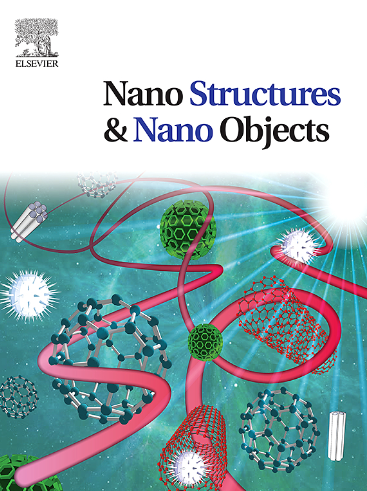Numerical study of thermal performance of silica-aerogel/paraffin nanostructure in the presence of CuO nanoparticles: A molecular dynamics approach
IF 5.45
Q1 Physics and Astronomy
引用次数: 0
Abstract
The rise in air pollution and fuel costs increased the use of various renewable energy options. Currently, scientists face a significant challenge. Finding methods to store energy that can be easily converted is crucial. There is growing interest in using phase change materials for thermal energy storage systems. This interest stems from their ability to conserve energy and reduce air pollution. Silica aerogel effectively maintains the temperature of items over long periods. Phase change materials, recognized for storing thermal energy, are now favored for preserving both hot and cold temperatures. This study aimed to use computer simulations to understand the behavior of silica aerogel/PCM and CuO nanoparticles in a cube. The results show that the nanostructure can achieve a velocity of 0.0086 Å/fs and had a thermal conductivity of 1.85 W/m·K. These findings may have practical applications in heating and cooling systems, energy storage, and the aerospace industry.
求助全文
约1分钟内获得全文
求助全文
来源期刊

Nano-Structures & Nano-Objects
Physics and Astronomy-Condensed Matter Physics
CiteScore
9.20
自引率
0.00%
发文量
60
审稿时长
22 days
期刊介绍:
Nano-Structures & Nano-Objects is a new journal devoted to all aspects of the synthesis and the properties of this new flourishing domain. The journal is devoted to novel architectures at the nano-level with an emphasis on new synthesis and characterization methods. The journal is focused on the objects rather than on their applications. However, the research for new applications of original nano-structures & nano-objects in various fields such as nano-electronics, energy conversion, catalysis, drug delivery and nano-medicine is also welcome. The scope of Nano-Structures & Nano-Objects involves: -Metal and alloy nanoparticles with complex nanostructures such as shape control, core-shell and dumbells -Oxide nanoparticles and nanostructures, with complex oxide/metal, oxide/surface and oxide /organic interfaces -Inorganic semi-conducting nanoparticles (quantum dots) with an emphasis on new phases, structures, shapes and complexity -Nanostructures involving molecular inorganic species such as nanoparticles of coordination compounds, molecular magnets, spin transition nanoparticles etc. or organic nano-objects, in particular for molecular electronics -Nanostructured materials such as nano-MOFs and nano-zeolites -Hetero-junctions between molecules and nano-objects, between different nano-objects & nanostructures or between nano-objects & nanostructures and surfaces -Methods of characterization specific of the nano size or adapted for the nano size such as X-ray and neutron scattering, light scattering, NMR, Raman, Plasmonics, near field microscopies, various TEM and SEM techniques, magnetic studies, etc .
 求助内容:
求助内容: 应助结果提醒方式:
应助结果提醒方式:


